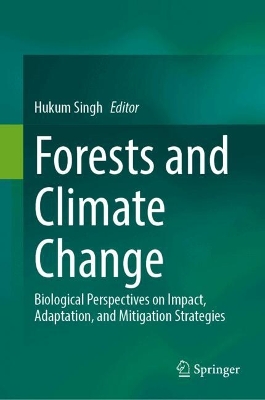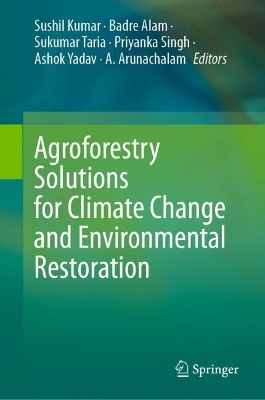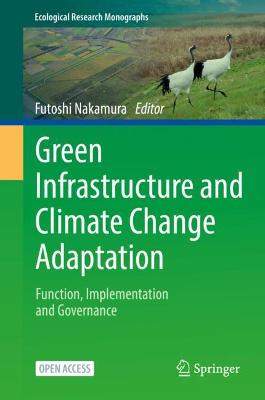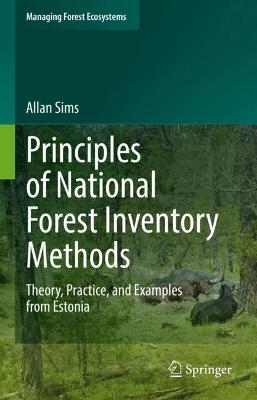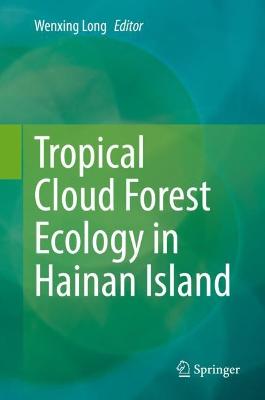Green Infrastructure and Climate Change Adaptation
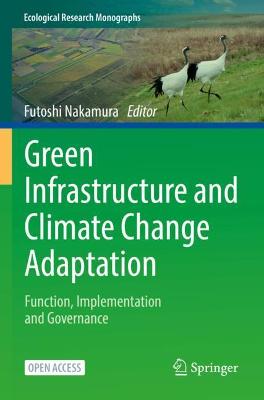 portes grátis
portes grátis
Green Infrastructure and Climate Change Adaptation
Function, Implementation and Governance
Nakamura, Futoshi
Springer Verlag, Singapore
01/2022
506
Mole
Inglês
9789811667930
15 a 20 dias
926
Descrição não disponível.
Chapter 1: Introduction.- Part 1: Concept and synthesis.- Chapter 2: Concept and application of hybrid infrastructure.- Chapter 3: An Economic Analysis of Optimal Hybrid Infrastructure: A Theoretical Approach in a Hydro-Economic Model.- Chapter 4: Flood Management Policy in Shiga Prefecture, Japan: Implementation Approach of a Risk-Based Flood Management System at Catchment Scale.- Chapter 5: Toward social infrastructure: typological idea for evaluating implementation potential of green infrastructure.- Part 2 : Forest ecosystem.- Chapter 6: Riparian Forests and Climate Change: Interactive Zone of Green and Blue Infrastructure.- Chapter 7: Improvement of the flood-reduction function of forests based on their interception evaporation and surface storage capacities.- Chapter 8: Forests for water: A step-by-step guide for payment schemes.- Part 3: River and floodplain ecosystem (including paddy field and other farmlands).- Chapter 9: Wetland Paddy Fields as Green Infrastructure against Flood.- Chapter 10: Change in Floodwater Retention Function of a Paddy Field due to Cultivation Abandonment in a Depopulating Rural Region in Japan.- Chapter 11: Paddy field as a green inflastructure: their ecosystem services and threatening drivers.- Part 4: Wetland ecosystem (including flood-control pond).- Chapter 12: Flood-control basins as green infrastructures: flood-risk reduction, biodiversity conservation and sustainable management in Japan.- Chapter 13: Natural Succession of Wetland Vegetation in a Flood-control Pond Constructed on Abandoned Farmland.- Chapter 14: Biodiversity Conservation through Various Citizen Activities in a Flood Control Basin.- Part 5: Urban and city ecosystem.- Chapter 15: Toward holistic Urban Green Infrastructure Implementation.- Chapter 16: Changes in the Use of Green Spaces by Citizens before and during the First COVID-19 Pandemic: A Big data analysis usingmobile-tracking GPS data in Kanazawa, Japan.- Chapter 17: Land Use Planning as a Green Infrastructure in a Rural Japanese Depopulated Town.- Chapter 16: Towards an Equitable Distribution of Urban Green Spaces for People and Landscapes; An opportunity for Portland's Green Grid.- Part 6: Coast and estuary ecosystem.- Chapter 19: "Effectiveness and Sustainability of Coastal Hybrid Infrastructures for Low-Frequency Large-Scale Disasters.- A Case Study of Coastal Disaster Assessment for a Complex Disaster".- Chapter 20: Challenging a Hybrid between Green and Gray Infrastructure - Coastal Sand-covered Embankments.- Chapter 21: Green Infrastructures in Megacity Jakarta: Current Status and Possibilities of Mangroves for Flood Damage Mitigation.- Chapter 22: Implementation of Japanese Blue Carbon Offset Crediting Projects.- Part 7: Economic evaluation.- Chapter 23: Understanding Preference Differences among Individuals for the Reduction in Flood Risk by Green Infrastructure.- Chapter 24: Assessing Public Preference for Construction of Giant Seawalls Using the Best-Worst Scaling Approach.- Chapter 25: "Coastal communities' preferences of grey, green and hybrid infrastructure against unexpected catastrophes: A case study of Japan".- Chapter 26: Carbon storage and substitution benefits of harvested wood products.- Part 8: Governance.- Chapter 27: Social System in Collaborative Activities for Conserving Coastal Pine Forest in Karatsu City, Kyusyu, Japan.- Chapter 28: Governance for realizing multifunctional floodplain; flood control, agriculture, and biodiversity in Yolo Bypass Wildlife Area, California, USA.- Chapter 29: Analysis of the description of the multifunctionality of farmland in the administrative plans of local municipalities.
Este título pertence ao(s) assunto(s) indicados(s). Para ver outros títulos clique no assunto desejado.
Open Access;Green infrastructure;Ecosystem-based disaster risk reduction;Climate change;Adaptation strategy;Flood;Tsunami;Hybrid-infrastructure
Chapter 1: Introduction.- Part 1: Concept and synthesis.- Chapter 2: Concept and application of hybrid infrastructure.- Chapter 3: An Economic Analysis of Optimal Hybrid Infrastructure: A Theoretical Approach in a Hydro-Economic Model.- Chapter 4: Flood Management Policy in Shiga Prefecture, Japan: Implementation Approach of a Risk-Based Flood Management System at Catchment Scale.- Chapter 5: Toward social infrastructure: typological idea for evaluating implementation potential of green infrastructure.- Part 2 : Forest ecosystem.- Chapter 6: Riparian Forests and Climate Change: Interactive Zone of Green and Blue Infrastructure.- Chapter 7: Improvement of the flood-reduction function of forests based on their interception evaporation and surface storage capacities.- Chapter 8: Forests for water: A step-by-step guide for payment schemes.- Part 3: River and floodplain ecosystem (including paddy field and other farmlands).- Chapter 9: Wetland Paddy Fields as Green Infrastructure against Flood.- Chapter 10: Change in Floodwater Retention Function of a Paddy Field due to Cultivation Abandonment in a Depopulating Rural Region in Japan.- Chapter 11: Paddy field as a green inflastructure: their ecosystem services and threatening drivers.- Part 4: Wetland ecosystem (including flood-control pond).- Chapter 12: Flood-control basins as green infrastructures: flood-risk reduction, biodiversity conservation and sustainable management in Japan.- Chapter 13: Natural Succession of Wetland Vegetation in a Flood-control Pond Constructed on Abandoned Farmland.- Chapter 14: Biodiversity Conservation through Various Citizen Activities in a Flood Control Basin.- Part 5: Urban and city ecosystem.- Chapter 15: Toward holistic Urban Green Infrastructure Implementation.- Chapter 16: Changes in the Use of Green Spaces by Citizens before and during the First COVID-19 Pandemic: A Big data analysis usingmobile-tracking GPS data in Kanazawa, Japan.- Chapter 17: Land Use Planning as a Green Infrastructure in a Rural Japanese Depopulated Town.- Chapter 16: Towards an Equitable Distribution of Urban Green Spaces for People and Landscapes; An opportunity for Portland's Green Grid.- Part 6: Coast and estuary ecosystem.- Chapter 19: "Effectiveness and Sustainability of Coastal Hybrid Infrastructures for Low-Frequency Large-Scale Disasters.- A Case Study of Coastal Disaster Assessment for a Complex Disaster".- Chapter 20: Challenging a Hybrid between Green and Gray Infrastructure - Coastal Sand-covered Embankments.- Chapter 21: Green Infrastructures in Megacity Jakarta: Current Status and Possibilities of Mangroves for Flood Damage Mitigation.- Chapter 22: Implementation of Japanese Blue Carbon Offset Crediting Projects.- Part 7: Economic evaluation.- Chapter 23: Understanding Preference Differences among Individuals for the Reduction in Flood Risk by Green Infrastructure.- Chapter 24: Assessing Public Preference for Construction of Giant Seawalls Using the Best-Worst Scaling Approach.- Chapter 25: "Coastal communities' preferences of grey, green and hybrid infrastructure against unexpected catastrophes: A case study of Japan".- Chapter 26: Carbon storage and substitution benefits of harvested wood products.- Part 8: Governance.- Chapter 27: Social System in Collaborative Activities for Conserving Coastal Pine Forest in Karatsu City, Kyusyu, Japan.- Chapter 28: Governance for realizing multifunctional floodplain; flood control, agriculture, and biodiversity in Yolo Bypass Wildlife Area, California, USA.- Chapter 29: Analysis of the description of the multifunctionality of farmland in the administrative plans of local municipalities.
Este título pertence ao(s) assunto(s) indicados(s). Para ver outros títulos clique no assunto desejado.

